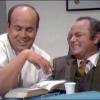Dial (face) cleaning?
-
Recently Browsing
- No registered users viewing this page.
-
Topics
-
Posts
-
Nev‘s advice would be my first idea, too (or even changing the whole overcoil, as the straight sector is too short). However the coil is already almost straight there, more straightening hardly advisable. But assuming the up-bend (the „knee“) is at the red arrow and realizing that the gap between coils is too wide there, I would first bend at the yellow arrow, the other end of Nev‘s yellow line. It not yet enough, go to Nev‘s end of the yellow line. Frank
-
By watchweasol · Posted
Hello and welcome to the forum. Enjoy. Depending how deep you want to go have a look at the watch fix courses run by our Administrator Mark Lovick. -
By watchweasol · Posted
Hi welcome to the forum, the problem as explained is excess current drain. Usually caused by a dirty movement needing a good service. Th that end I have attached the service sheet to assist . A build up of dirty oil in the jewels or the rotor collecting debris all these things contribute . 3385_ETA 988.333.pdf You will find the current specifications on the sheet, you will need at least a multimeter capable of reading micro amps to check the consumption. -
Firstly I would aim to get the collet centred in the hairspring, then adjust so it sits over the jewel hole. From your pic I'm struggling to tell whether the collet is centred - does it open too quickly at the arrow? If so, a tweak near the pin should fix it. If you need to adjust it, have a look in this lesson from the "Chicago School of Watchmaking" which explains how to adjust collets in hairsprings to get them centred. chicago lesson 19.PDF To get the collet over the hole (assuming the rest of the spring has been sorted), I just grab the collet and pull the whole spring in the direction it needs to go.
-





Recommended Posts
Join the conversation
You can post now and register later. If you have an account, sign in now to post with your account.
Note: Your post will require moderator approval before it will be visible.